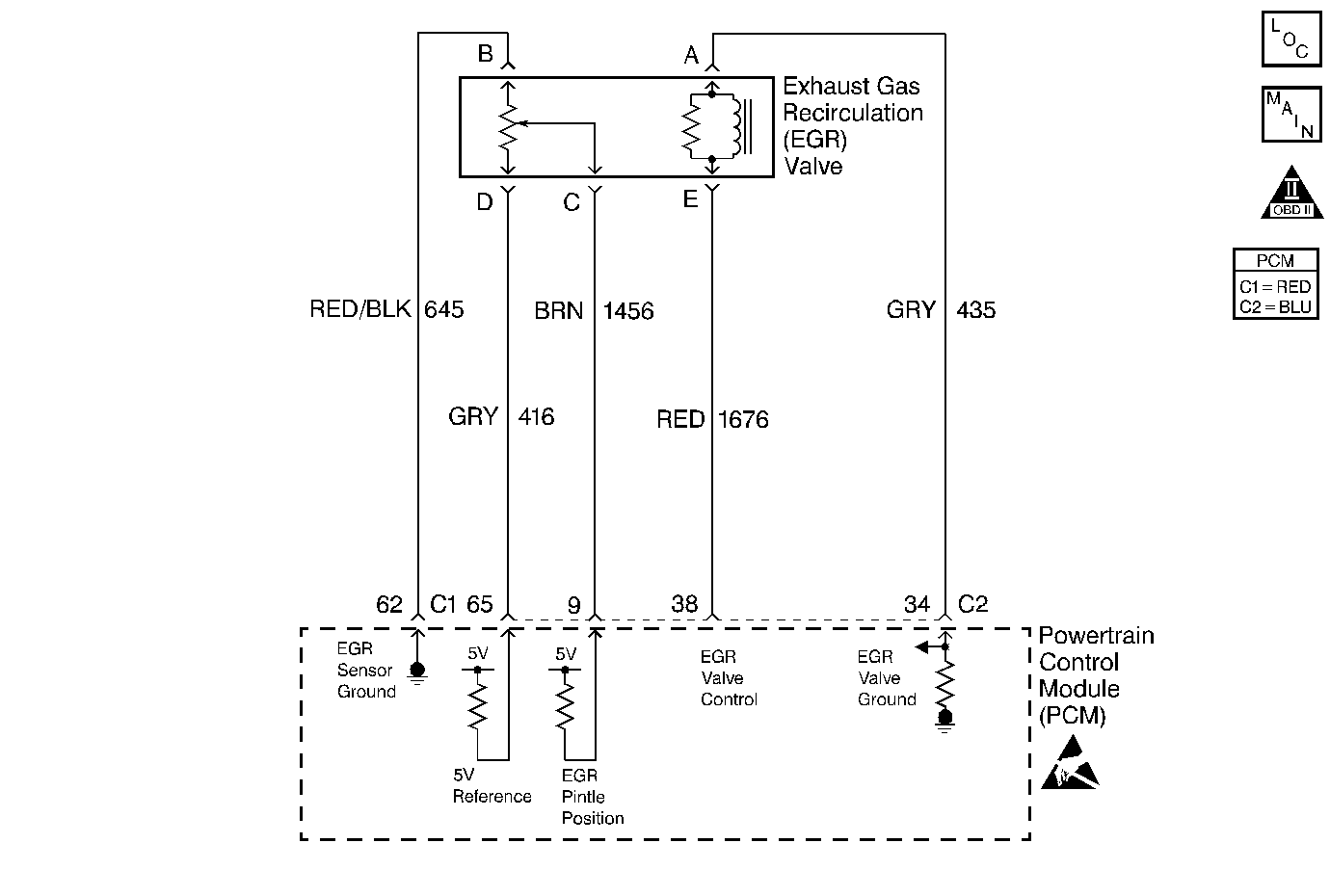
Circuit Description
The Exhaust Gas Recirculation (EGR) system lowers the Oxides of Nitrogen (NOx) emission levels created by the high combustion temperatures by suppling cooler exhaust gasses to the combustion chamber.
The EGR valve pintle is opened by the PCM when the conditions of operation have been met. The exhaust gas flows from the exhaust manifold through the EGR pipe, intake manifold passages, and the EGR valve orifice into the intake manifold. The exhaust gasses mix with the intake air and enters the combustion chamber.
Diagnostic Aids
Too little EGR flow or no EGR flow allows the combustion temperature to increase. This causes the following symptoms:
| • | Spark knock (detonation) |
| • | Engine overheating |
| • | Emission test failure |
| • | Poor fuel economy |
Restrictions or blockage in the EGR passages may be caused by the following conditions:
| • | Contaminated fuel |
| • | Poor fuel quality |
| • | High mileage or excessively worn internal engine components |
Too much EGR flow causes any of the following conditions to occur:
| • | The engine stalls after a cold start |
| • | The engine stalls during closed throttle condition |
| • | A rough idle |
Test Description
The numbers below refer to the step numbers on the diagnostic table.
-
DTC P0404, P0405, P1404 a problem in the EGR valve electrical circuits.
-
This test will determine if any EGR passages are restricted.
Step | Action | Value(s) | Yes | No | ||||
|---|---|---|---|---|---|---|---|---|
1 | Did you perform the Powertrain On-Board Diagnostic (OBD) System Check? | -- | ||||||
Are there any EGR DTC's set? | -- | Go to the applicable DTC | ||||||
Does the engine run rough or stall? | 50% | |||||||
4 |
Did you find and correct the condition? | -- | System OK | |||||
5 |
Did you find and correct the condition? | -- | System OK | -- | ||||
6 | Visually and physically inspect the following items for a leak:
Did you find a problem? | -- | System OK | |||||
7 | Repair or replace the components as necessary. Is the action complete? | -- | System OK | -- |
